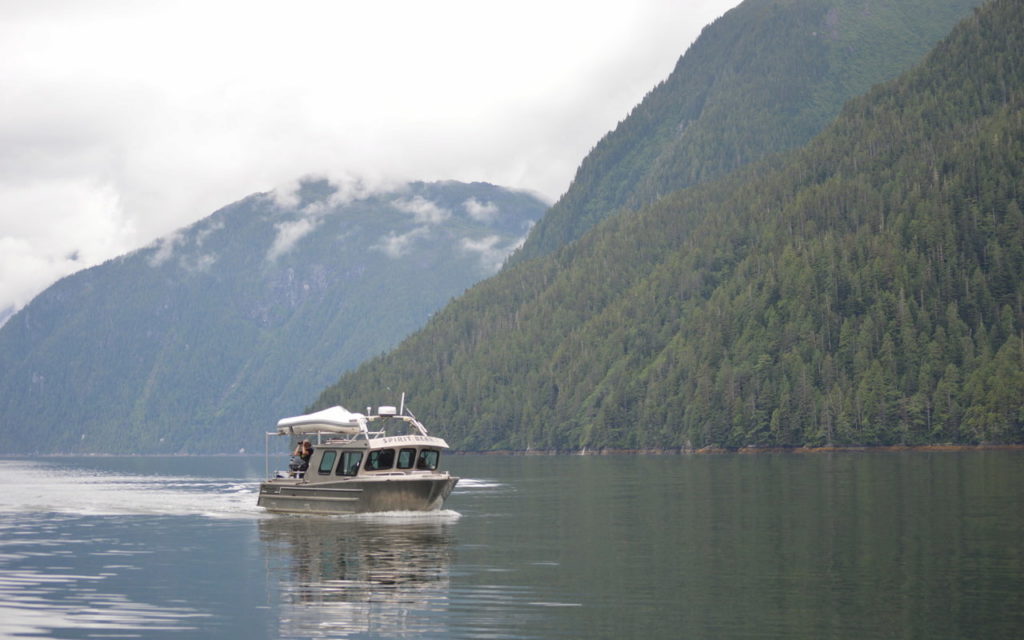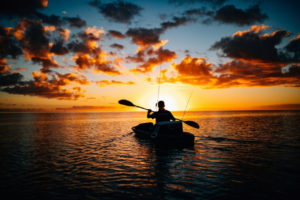For the past 17 years, I’ve had the incredible pleasure of boating, fishing, working, filming and cruising the Great Bear Rainforest.
During those early years with Cariboo Chilcotin Coast Tourism Association and myriad television and film production, Great Bear wasn’t even a concept born and British Columbia Central Coast was the moniker commonly used for the coastal stretch from Hartley Bay to Rivers Inlet.
Grizzly bear hunting was still commonplace and tourism generally consisted of often unsustainable sport fishing and servicing cruising yachts of wealthy Americans. It was chock full of pursuits based on resource extraction, a far cry from the sustainable, socially conscious and experiential tourism we see today. It’s almost preposterous, in a land holding Coastal First Nations history dating back more than 10,000 years, to proclaim to be anything of an expert on the subject of British Columbia coast…or as we now come to know it…Traditional Territory of Coastal First Nations.

Long before the United Nations Declaration on Rights of Indigenous Peoples (boiled down to the unpleasant contraction UNDRIP), Indigenous relations simply meant being a good human, with good human values and fostering heartfelt conversations and friendships. In my case, this often was aided by a mariner skillset and ability to boat into Nations’ docks and make friends through fishing and fisheries work. This was not long ago, but does seem like an eternity. Since then we’ve witnessed a new tone and self-empowerment in Coastal First Nations, listened to talk of de-colonization and ultimately arrived at the current travesty of burial sites at former Indian residential schools. It’s a blemished history and can wreak of white colonial privilege.
It really shouldn’t take anyone with a shred of forethought and decency to know this period of colonization and the early Canadian government was a dark and terrible one. I watched the morning news one day a few years back. There was a story from Ryerson University, my journalism alma mater, where First Nations protestors and supporters toppled the Egerton Ryerson statue on Gould Street. It was painted red and brought to light Ryerson’s past as an architect of those very residential schools. Ryerson has now been renamed Toronto Metropolitan University. One needs to be careful who they hold up as a hero and prop forth as a wonderful leader. Phooey.
Anyway, with a changing political landscape in Canada and a growing commitment to reconciliation with our First Nations, it’s become apparent we might be moving down a finer path. A more enlightened path. And this holds true with British Columbia’s Great Bear Rainforest and Traditional Territory of Coastal First Nations.

We’re moving down a new tourism road in Great Bear, including key First Nations and communities: Gitga’at Nation (Hartley Bay); Kitasoo Xai’xais Nation (Klemtu); Heiltsuk Nation (Bella Bella); Nuxalk Nation (Bella Coola) and Wuikinuxv Nation (Rivers Inlet). New ventures in eco-tourism are coming online all the time and wildlife viewing is truly world class. From viewing Spirit Bears on Gribbell and Princess Royal Islands to the Heiltsuk purchase of Shearwater and re-branding Shearwater Wilderness Resort, stewardship and new age opportunity have never been stronger in Great Bear Rainforest. Wildlife viewing and eco-tourism are incredible in Bella Coola Valley and tiny Wuikinuxv on the Wannock River is starting its own tourism ventures and creating new partnerships.
It all makes for an exciting time and one which sees us finally bring our work to the media and modern-age responsible tourism ethos to the place we love. With that I’m incredibly proud, on behalf of our team and Great Bear Project, to launch our digital media strategy Great Bear Tales, in cooperation with our Coastal First Nations friends, Destination BC, Indigenous Tourism BC and tourism partners on this incredible BC Coastline. The new website www.greatbeartales.com has been a labour of love and the @GreatBearTales YouTube Channel is fully operational and features some great video stories from the GBR. Look out for our latest offerings in Instagram and YouTube Channels, e-newsletters and monthly blogs.
It’s an exciting time in Great Bear and we’re looking forward to assisting local partners and Nations in developing and marketing sustainable and biosphere-endorsed tourism opportunities in the Great Bear Rainforest.
Welcome…to Great Bear Tales!
Sincerely,
Tim Milne
Great Bear Project





